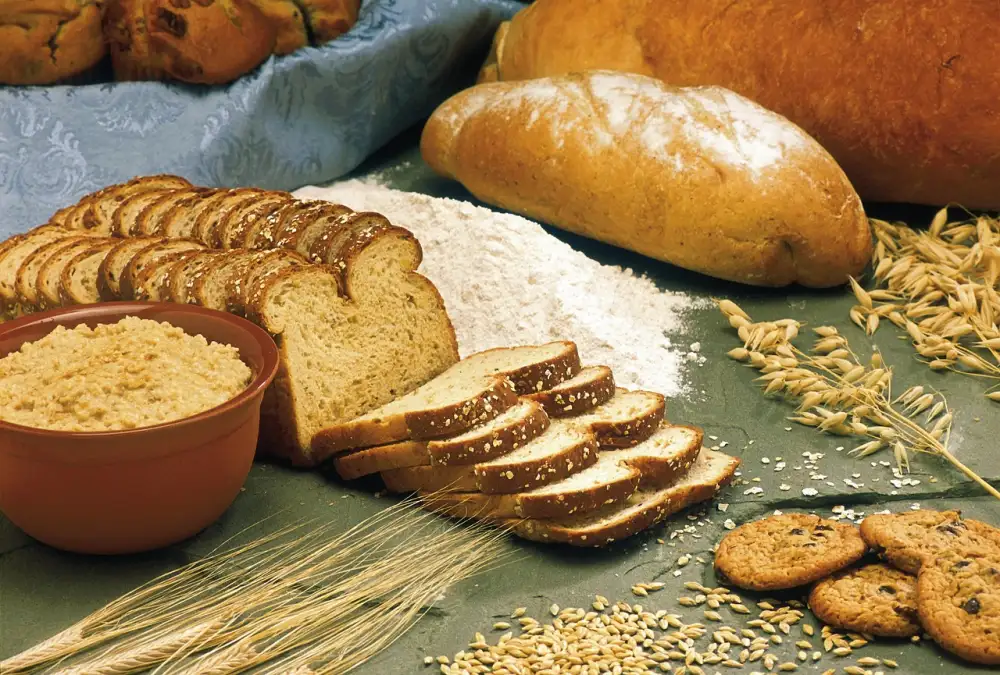Soft and Savory: Delightful Suggestions for Easy-to-Eat Soft Foods

Soft foods are a culinary delight that offer both comfort and nourishment. These foods have a tender texture, making them easy to chew and swallow. Whether you have dental issues, difficulty swallowing, or simply enjoy the gentle sensation of soft foods, there is a wide range of options available to tantalize your taste buds. From creamy soups and mashed potatoes to smoothies and puddings, soft foods can be both delicious and satisfying. In this article, we will explore the benefits of soft foods for dental health, their suitability for individuals with swallowing difficulties, their nutritional value in maintaining a balanced diet, as well as recipes and tips for preparing and enjoying these delectable dishes. So sit back, relax, and let's dive into the world of soft foods!
Benefits of Soft Foods for Dental Health
Soft foods offer numerous benefits for dental health. Firstly, they are gentle on the teeth and gums, reducing the risk of damage or irritation. Chewing hard or crunchy foods can sometimes lead to tooth fractures or gum injuries. Secondly, soft foods require less chewing, which can be beneficial for individuals with sensitive teeth or jaw pain. Additionally, soft foods are often easier to clean from the mouth compared to sticky or hard-to-reach food particles. This helps prevent plaque buildup and reduces the risk of cavities and gum disease. By incorporating soft foods into your diet, you can promote good oral hygiene and maintain a healthy smile.
Soft Foods for People with Difficulty Swallowing
For individuals who experience difficulty swallowing, consuming regular solid foods can be a challenge. Soft foods provide a solution by offering easy-to-swallow options that are both nutritious and enjoyable. These foods are often softer in texture, making them easier to chew and swallow without discomfort or risk of choking.
One popular soft food option is mashed potatoes. Boiled until tender and then mashed with butter and milk, mashed potatoes have a smooth consistency that is gentle on the throat. They can be seasoned with herbs or spices to add flavor and variety.
Another excellent choice is yogurt. With its creamy texture, yogurt slides down the throat effortlessly. It is also packed with essential nutrients like calcium and protein, making it an excellent choice for those with difficulty swallowing.
Soups and broths are also ideal for individuals with swallowing difficulties. Pureed soups made from vegetables or legumes provide nourishment while being easy to consume. Chicken or beef broth can be sipped slowly, providing hydration along with essential minerals.
Soft fruits such as bananas or avocados are great options as well. They can be easily mashed into a smooth consistency that requires minimal effort to swallow. These fruits are also rich in vitamins and minerals, contributing to a balanced diet.
By incorporating soft foods into their meals, individuals with difficulty swallowing can still enjoy a wide variety of flavors while ensuring they receive the necessary nutrients for their overall health and well-being.
Nutritious Soft Foods for a Balanced Diet
Soft foods can still provide all the essential nutrients needed for a balanced diet. Incorporating these foods into your meals ensures that you are getting the nourishment your body needs, even if you have difficulty chewing or swallowing.
1. Smoothies: Packed with vitamins and minerals, smoothies are an excellent way to get a variety of nutrients in one easy-to-consume drink. Blend together fruits, vegetables, yogurt, and milk or juice for a refreshing and nutritious meal.
2. Mashed Potatoes: Creamy and comforting, mashed potatoes are not only delicious but also rich in potassium and vitamin C. Opt for homemade versions to control the amount of added fats and seasonings.
3. Soups: Warm and soothing soups are a great option for those looking to maintain a balanced diet. Choose hearty vegetable or pureed soups that are packed with fiber, vitamins, and minerals.
4. Yogurt: High in protein and calcium, yogurt is an excellent choice for a soft food diet. Opt for plain varieties without added sugars or flavors, and add fresh fruits or honey for natural sweetness.
5. Eggs: Whether scrambled or boiled, eggs are a versatile source of protein that can be easily incorporated into soft food diets. They also provide essential vitamins such as vitamin D and B12.
6. Nut butter: Smooth nut butters like almond or peanut butter offer healthy fats, protein, and fiber. Spread them on soft bread or mix them into smoothies for added nutrition.
Remember to consult with a healthcare professional or registered dietitian to ensure that your soft food choices align with your specific dietary needs. By incorporating these nutritious options into your meals, you can enjoy a balanced diet while still embracing the comfort of soft foods
Soft Foods for Post-Surgery or Dental Procedures
After undergoing surgery or dental procedures, it is crucial to give your body the nourishment it needs to heal and recover. Soft foods are an excellent option during this time as they are gentle on the mouth and easy to consume. Here are some soft food suggestions that will provide you with the necessary nutrients while promoting healing:
1. Soups and broths: Warm and comforting, soups and broths are perfect for those in recovery. Opt for smooth varieties such as tomato soup, chicken noodle soup, or vegetable broth.
2. Mashed potatoes: Creamy and satisfying, mashed potatoes are a go-to soft food option. They can be easily flavored with herbs or cheese to add extra taste.
3. Yogurt: Packed with protein and probiotics, yogurt is not only soothing but also beneficial for digestion. Choose plain or fruit-flavored options without any chunks.
4. Smoothies: Blend together fruits, yogurt, milk or juice to create a nutritious and refreshing smoothie. You can even add protein powder or nut butter for an extra boost.
5. Oatmeal: A warm bowl of oatmeal provides fiber and energy while being gentle on the teeth. Customize it with toppings like honey, cinnamon, or mashed bananas.
Remember to avoid spicy foods, crunchy snacks, or anything that requires excessive chewing during this recovery period. It's essential to prioritize your healing by opting for soft foods that provide comfort and nourishment to aid in your post-surgery or dental procedure journey
Soft Foods for Babies and Toddlers
Introducing solid foods to babies can be an exciting milestone, but it's important to start with soft foods that are easy for their developing digestive systems to handle. Soft foods not only provide the necessary nutrition for growth and development but also help in transitioning from a milk-only diet.
For babies who have just started solids, pureed fruits and vegetables are excellent options. Apples, pears, bananas, sweet potatoes, and carrots can be steamed or boiled until soft and then mashed or pureed into a smooth consistency. These soft textures make it easier for babies to swallow and digest.
As babies grow older and develop more teeth, you can introduce slightly textured soft foods like cooked pasta, rice, or oatmeal. These provide additional nutrients while still being gentle on their delicate gums.
For toddlers who are already accustomed to solid foods, soft finger foods like small cubes of cooked chicken or tofu, scrambled eggs, mashed avocado or banana can be offered. These foods not only provide essential nutrients but also help develop their fine motor skills as they learn to self-feed.
Remember to always supervise your baby or toddler while they eat to prevent choking hazards. Cut food into small pieces and avoid hard or sticky items that may pose a risk.
By introducing a variety of soft foods early on, you're helping your little one develop healthy eating habits that will benefit them throughout their lives. So get creative in the kitchen and enjoy exploring different flavors and textures with your baby or toddler!
Delicious Soft Food Recipes to Try
1. Creamy Mashed Potatoes: Boil peeled potatoes until tender, then mash with butter, milk, and a pinch of salt. For extra flavor, add grated cheese or roasted garlic.
2. Smooth Butternut Squash Soup: Roast butternut squash until soft, then blend with vegetable broth, cream, and spices like nutmeg and cinnamon. Serve warm with a dollop of sour cream.
3. Tender Chicken Salad: Poach chicken breasts in seasoned broth until cooked through. Shred the chicken and mix with mayonnaise, diced celery, chopped grapes, and a squeeze of lemon juice. Serve on soft bread or lettuce wraps.
4. Silky Avocado Pudding: Blend ripe avocados with cocoa powder, honey or maple syrup, and a splash of almond milk until smooth and creamy. Chill in the refrigerator before serving as a healthy dessert.
5. Easy Egg Custard: Whisk together eggs, milk, sugar, and vanilla extract. Pour into ramekins and bake in a water bath until set. Enjoy this comforting dessert warm or chilled.
These recipes offer both taste and texture for those who prefer soft foods while still providing essential nutrients for a balanced diet. Experiment with different flavors and ingredients to find your favorite soft food creations!
Tips for Preparing and Enjoying Soft Foods
1. Experiment with different cooking methods: Soft foods can be prepared in various ways to enhance their texture and flavor. Try steaming, boiling, or baking to achieve the desired softness.
2. Use a blender or food processor: These kitchen tools are essential for creating smooth purees and soups. They help break down ingredients into a soft and easy-to-eat consistency.
3. Add spices and herbs: Just because you're eating soft foods doesn't mean they have to be bland. Enhance the flavors of your dishes by adding herbs, spices, and seasonings. This will make your meals more enjoyable.
4. Incorporate protein-rich ingredients: Soft foods can still provide essential nutrients like protein. Include ingredients such as tofu, Greek yogurt, mashed beans, or finely shredded chicken to ensure a balanced diet.
5. Opt for nutrient-dense options: Choose soft foods that are packed with vitamins and minerals to support overall health. Examples include avocados, sweet potatoes, cooked vegetables, and fruits.
6. Play with textures: Even within the category of soft foods, there is room for variety in textures. Combine smooth purees with small chunks or add crunchy toppings like toasted breadcrumbs or nuts for added interest.
7. Take your time while eating: Eating slowly allows you to savor the flavors and aids digestion. Chew thoroughly if possible or take smaller bites if you have difficulty swallowing.
8. Serve at the right temperature: Some people prefer warm soft foods while others enjoy them chilled. Experiment with different temperatures to find what suits your taste buds best.
By following these tips, you can create delicious and nourishing soft food meals that are both satisfying and enjoyable to eat!
In conclusion, soft foods offer a world of comfort and nourishment for people of all ages and situations. Whether you are recovering from surgery, have dental issues, or simply enjoy the ease and texture of soft foods, there are endless options to explore. From creamy soups to smoothies and mashed vegetables, these gentle delights can be both delicious and nutritious. So why not embrace the comfort and nourishment that soft foods provide? They not only cater to our taste buds but also promote healing and overall well-being. So go ahead, indulge in the pleasure of easy-to-eat soft foods!
Published: 10. 12. 2023
Category: Health



